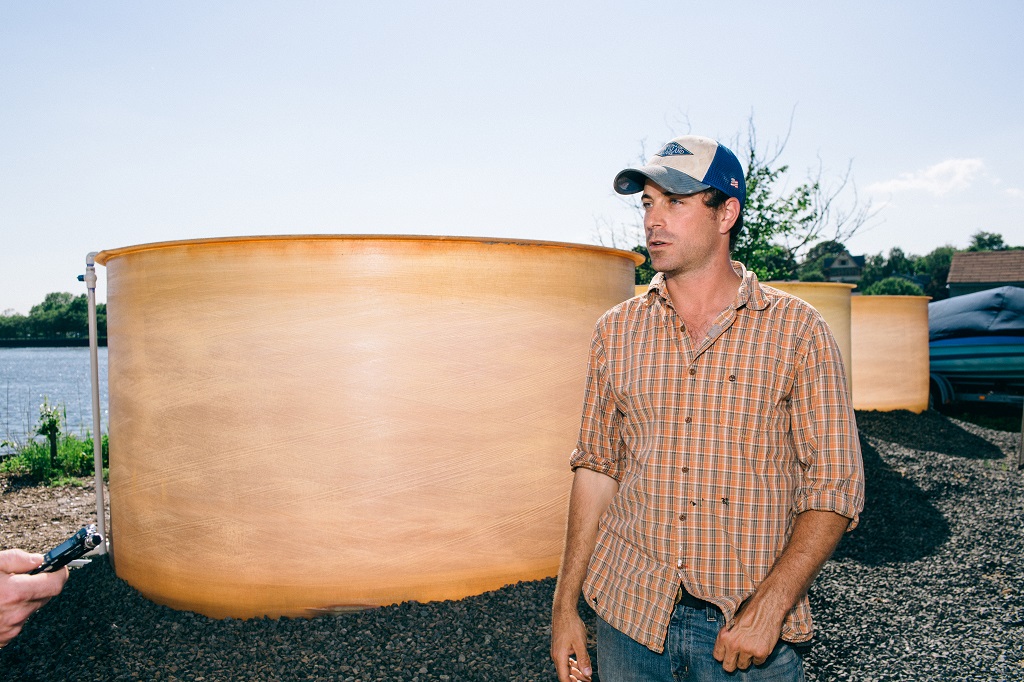Oystering in Fair Haven
Jimmy and Norm Bloom are the largest commercial growers of wild oysters on Long Island Sound. They tend oyster beds nearly the entire length of the Connecticut coastline and into Rhode Island, harvesting and packaging their final product in Norwalk under the label, Copps Island.
From their wharf in Fairhaven, a section of New Haven once world renowned for its oysters, the Blooms are installing aquiculture tanks for raising seed oysters from larvae. Once big enough, the baby oysters will be planted in an area of New Haven Harbor known as a prolific oyster ground during the heyday of oystering, more than a century ago.
The Blooms are investing in the new technology as a way of insuring crop survival during years when hurricanes or other extreme events wipe out their seed oyster beds, a cyclical problem in the oyster business.

For several generations, the Bloom family has practiced the traditional and labor-intensive method of farming wild spawning oysters on Long Island Sound. Using a method that dates back to the Romans and Egyptians, the Blooms send out a fleet of flat-decked fishing boats into tidal river basins like the mouth of the Quinnipiac River every spring. Piled high with cleaned oyster shells, the boats will deposit their loads underwater to form beds that catch free-floating oyster larva, known as spat.
When conditions are right, the spat adheres to the shell beds and grows into seed oysters. After a year, the Blooms will dredge up and move the young shellfish further out into the Sound, where they will mature into the meaty, shell-filling delicacies sought after by restaurants in Manhattan and beyond.

One ill-timed hurricane or other disaster, however, can destroy a seed crop, disrupting a production schedule years down the line.
“Some years we have 200,000 to 300,000 bushels. Some years we get nothing,” says Norm Bloom.
The Blooms hope that by producing seed oysters in tanks, they will have a ready supply to replenish their beds in the wake of a catastrophe. The system has been prototyped in the Chesapeake Bay region, and Jimmy Bloom is the first to try it in the Northeast. If successful, he hopes to expand the Fairhaven operation even further.

“Eventually we want to have a hatchery for the tank system and a shucking house,” Bloom says. “They used to can the oysters in this same spot back when it was owned by Long Island Oysters. We want to get that going again and try to employ a lot of people in the neighborhood.”


Photos by Ian Christmann

